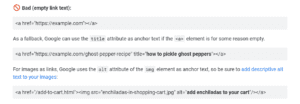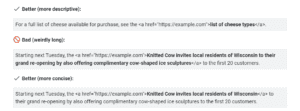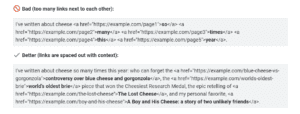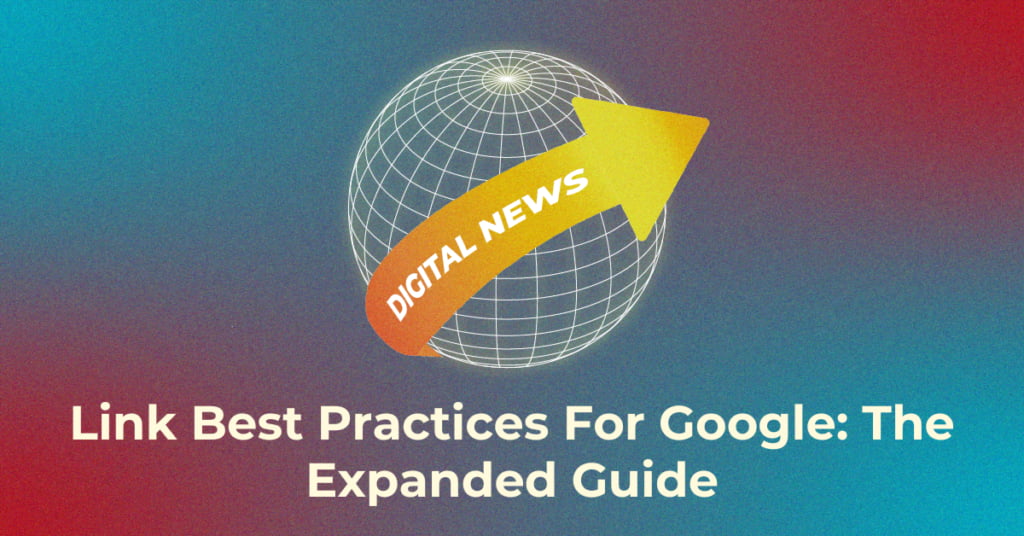|
Getting your Trinity Audio player ready...
|
Google has released a new or significantly updated, manual on best practices for SEO links. The old guide just covered how to make links crawlable but the new one now includes advice on where to insert anchor text, how to design effective anchor text, how to include internal links inside your content, and how to include external links from other websites.
Without further ado, let’s dive into the update guide:
Creating Crawlable Links
As per the guide, Google can crawl a link only if it has an anchor element (also known as <a> HTML element) with an href attribute. Links in other formats, and without an anchor element, won’t be crawled by Googlebot.
Here are examples of links that Google can and can’t parse:


Placement of Anchor Text
For the anchor text, Google recommends you place it between the <a> elements that Google can crawl. Anchor text is the visible text of a link. And what about anchor text for images? Alt and Img elements as anchor texts, and Google recommends adding descriptive alt text to images as links.
Using Javascript to insert anchor text? Google advises running the URL inspection tool to ensure that the anchor text is present in the rendered HTML.


Writing Descriptive Anchor Text
As per Google, the anchor text should provide context for the link. Writing anchor text shouldn’t be hard: it should be descriptive, to the point, and relevant to the page that it’s on and to the page it links to. The more accurate your anchor text, the simpler it will be for visitors to find their way around your website and for Google to comprehend what the page you are linking to is about.


Moreover, Google recommends writing anchor texts as naturally as possible and to avoid stuffing anchor texts with keywords. (Keyword stuffing is a violation of Google’s spam policies.) Avoid chaining links together; this makes it more difficult for readers to distinguish between them and eliminates surrounding text for each link.

Internal Links
Paying closer attention to the anchor text used for internal links can assist both people and Google in making sense of your site and finding other pages on your site. Hence, every page that is important to your site should be linked to from at least one other page on your website. The expanded guide also states that there isn’t a set number of links a given page should have.
External Links
Here, Google talks about the different types of tags to use for external links, their trust factor, and how to link to external links and provide context to your users about what they can expect on visiting the external site.
As per the guide, you shouldn’t shy away from linking to other sites, as they help establish trustworthiness. In case of linking to sites whose source you don’t trust, use the nofollow attribute. When linking to paid links, one should qualify them as sponsored or nofollow. Add the attributes ugc or nofollow for sites where users can insert links. (For example a forum section or a Q&A site)
Popular Searches
How useful was this post?
0 / 5. 0

















